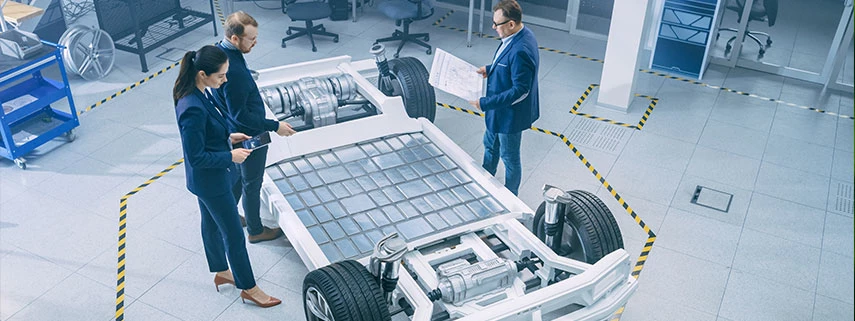Alternative fuels once seemed like a futuristic thought; petrol was king, and it would always reign on the fuel throne. Or so we thought.
Now, with net-zero targets in our sights and the hike in petrol prices, the popularity of electric vehicles (EVs) is set to grow exponentially — but alternative fuels don’t begin and end with EVs. Biofuels are already working their way into bowsers, and hydrogen may be Australia’s ultimate clean fuel.
Here’s how the top 3 alternative fuels are changing the future of transport.
1. Biofuels

Biofuels encompass any fuel derived immediately from renewable, living matter — like plants, algae, recycled cooking grease, or animal waste. They’re produced over a short time span rather than by slow natural processes involved in the formation of fossil fuels. The two most common varieties are ethanol and biodiesel.
Biodiesel has the potential to completely substitute petroleum-based diesel fuel in vehicles with compression-ignition (diesel) engines. It’s a sustainable alternative that emits significantly less CO2 when combusted, reducing lifecycle greenhouse gases by an average of 74 per cent. While it can be used in its pure state, it’s most often used in a blend with either 80 or 95 per cent petroleum diesel, known as B20 and B5. Most trucks currently run on some portion of biodiesel, even if their drivers don’t realise it, and can do so safely without any modifications.
However, for pure biodiesel or blends containing more than 20 per cent, the engine’s specs and warranty need to be checked and often require modifications to run effectively. Biodiesel is better used to improve traditional petroleum-based fuel rather than as a complete solution for the future; it isn’t as environmentally friendly or as viable as other alternatives, given the large swaths of land needed for growing the plants that are converted into fuel.
2. Electricity

Electric vehicles (EVs) are the hottest topic in alternative fuels, and for good reason. They’re often touted as the most viable ‘green’ option for vehicles — adopting electric trucks can drastically reduce a fleet’s carbon footprint, and they’re a promising solution to the rising cost of petroleum-based fuels. They’re significantly cheaper to run, including fuel savings of up to 70 per cent and maintenance savings of around 40 per cent. They’re quiet and smooth to drive, and the lithium-ion rechargeable batteries are highly efficient at converting electrical energy into kinetic energy to power the electric motor.
As an example of what can be achieved with EVs, in April this year, Australian company Janus Electric unveiled the country’s first electric prime mover fleet featuring four converted heavy haulage vehicles in Sydney. Converting the heavy vehicles already on the roads when they’re due for a major engine rebuild rather than purchasing brand-new EVs is a financially sound and sustainable solution. The swap and go-style batteries can be changed within four minutes, meaning trucks don’t need to wait around to recharge. It’s an exciting example, and it showcases the possibilities available for fleets across Australia. Though the upfront cost of EVs may be a financial barrier now for many fleets, they’re expected to become cheaper than petrol and diesel cars by 2027.
Hybrid electric vehicles (HEVs) are another option, and they’re particularly useful for those hesitant to fully commit to an EV. They combine an electric motor with an internal-combustion engine powered by petrol, and the HEV will either use the two sources of fuel together or independently in certain situations. They tend to be less expensive than an EV and don’t require charging using an external source while still reducing carbon emissions and fuel costs.
3. Hydrogen fuel

Hydrogen is the cleanest possible, non-polluting fuel and is emerging as an important part of a sustainable future. When hydrogen burns in the air, it produces nothing but water vapour, in other words, zero carbon emissions. It’s flexible, storable, safe and can be used for fuel cells to generate electricity to power cars, trucks, buses, and trains. They’re efficient too — the hydrogen fuel cell can charge far more quickly than the lithium-ion battery in EVs.
Australia has abundant natural resources to make clean hydrogen; the Australian Government is investing $1.4 billionin building a competitive hydrogen industry. Australia’s National Hydrogen Strategy aims to grow the industry and position Australia as a major player by 2030. At the end of 2021, a world-first project saw five hydrogen-powered trucks deployed to transport zinc from Sun Metals’ Townsville mine to the Port of Townsville. The Australian Renewable Energy Agency (ARENA) conditionally approved $3.02 million in funding to support the deployment. The five zero-emission trucks replaced equivalent diesel-powered trucks, avoiding 1,300 tonnes of CO2 emissions each year.
Replacing diesel vehicles with renewable hydrogen alternatives is viewed as a key opportunity for early uptake of commercially viable hydrogen due to the relatively high cost of diesel. However, hydrogen vehicles are currently significantly more expensive than EVs in Australia due to the complex way hydrogen is produced and the lack of infrastructure available. Though this is a current drawback, the future looks bright.
Fuelling the future
Alternative fuels are the future. They can, and will, help fleets reduce carbon emissions and reach net-zero targets while lowering maintenance and fuel costs. There are benefits everywhere you look; however, technology and infrastructure are still being developed, so prices remain high. Eventually, though, stopping to change a swap-and-go EV battery or recharge a hydrogen-fuelled truck on the highway will be the norm — and that future is just around the bend.

